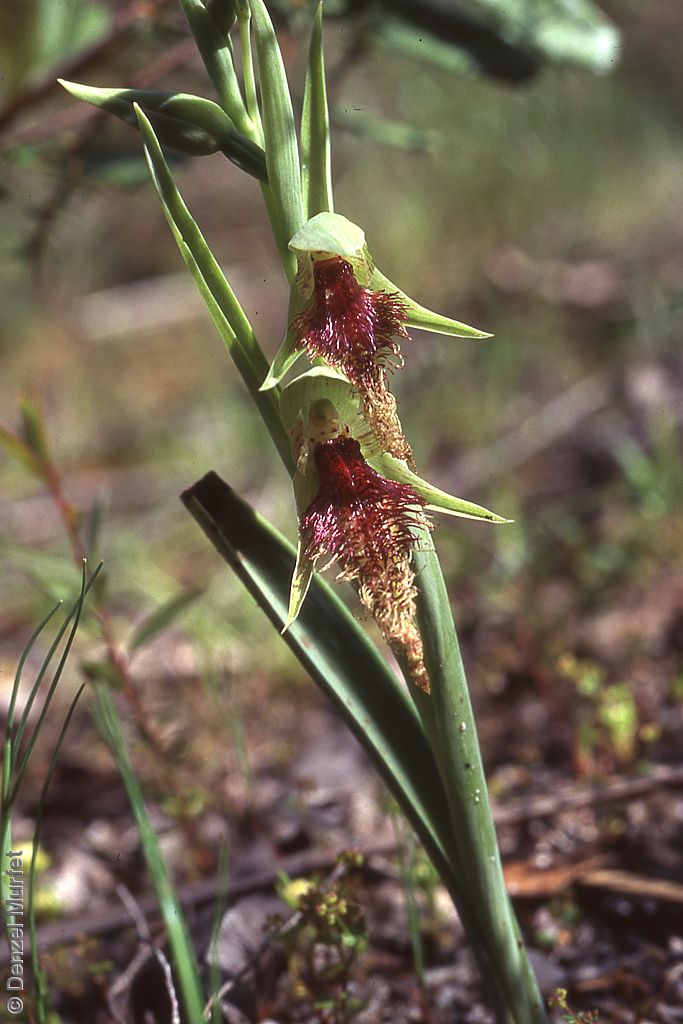
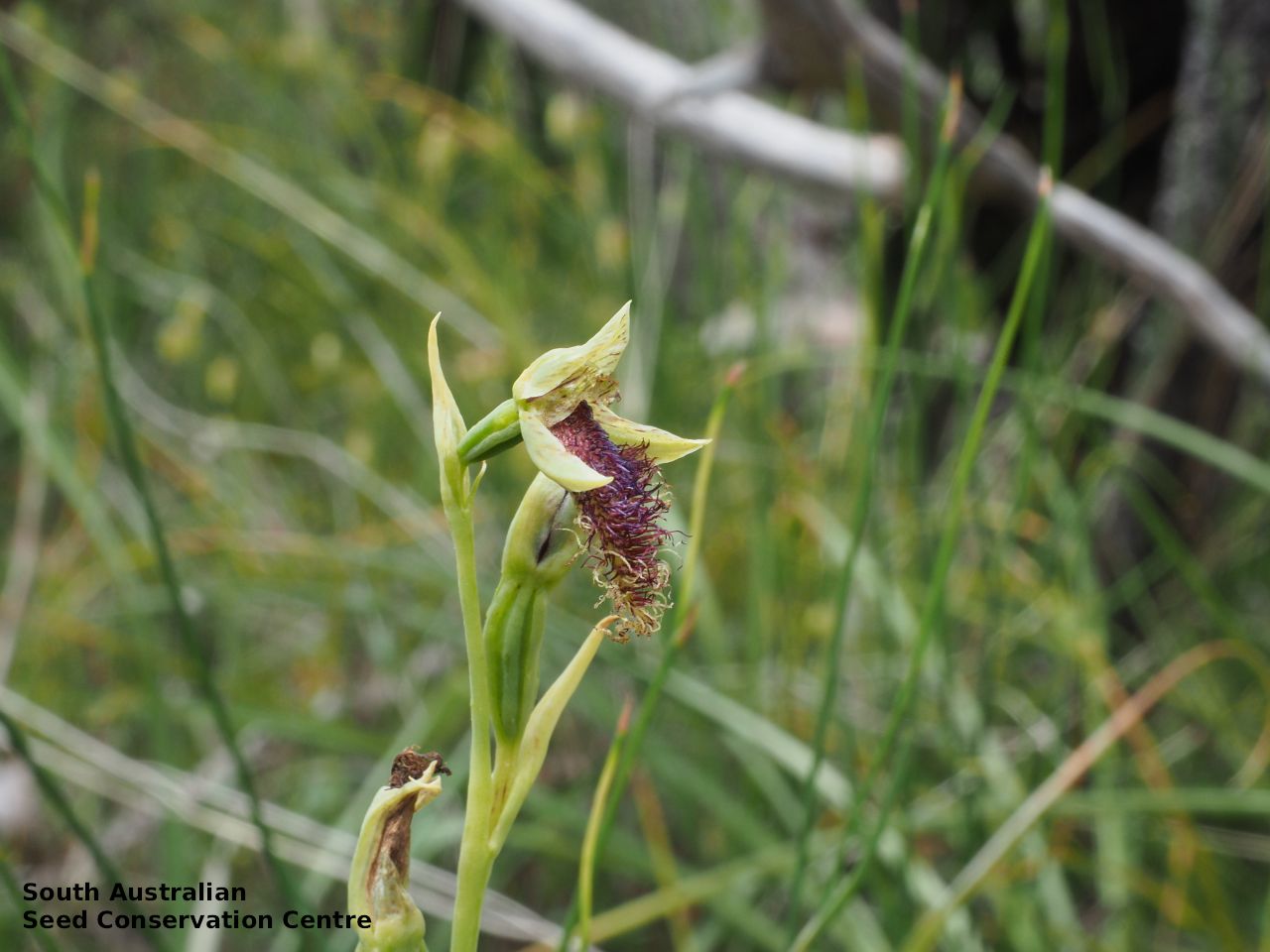
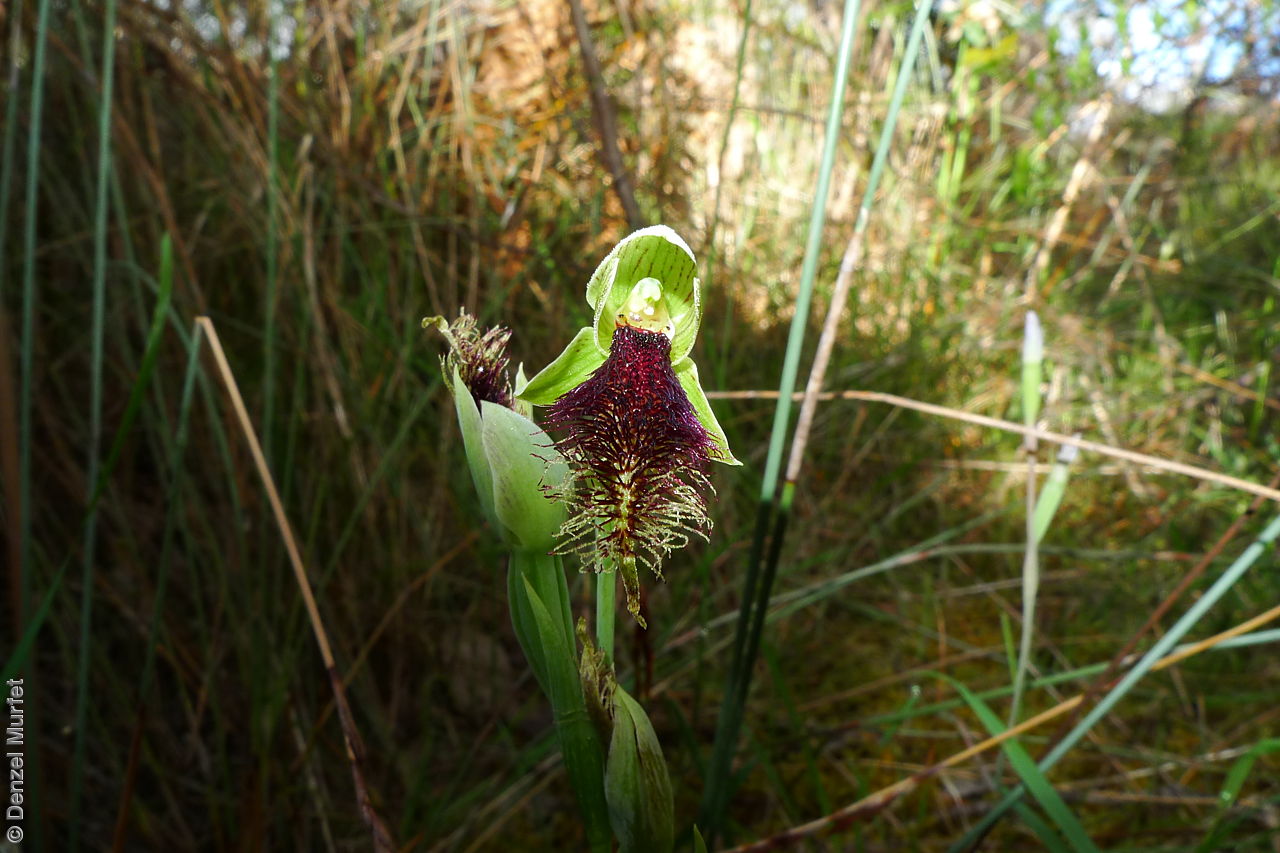


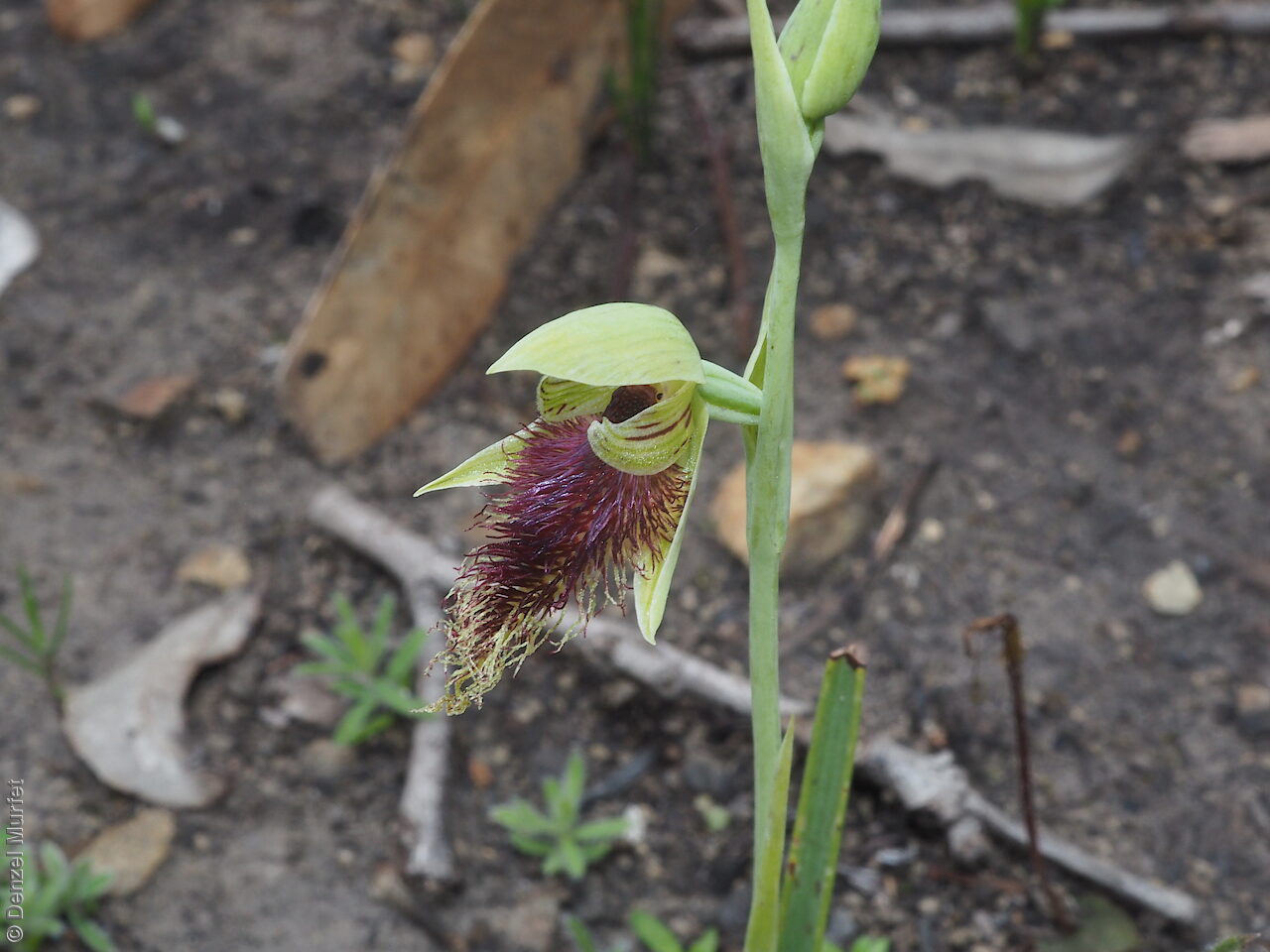
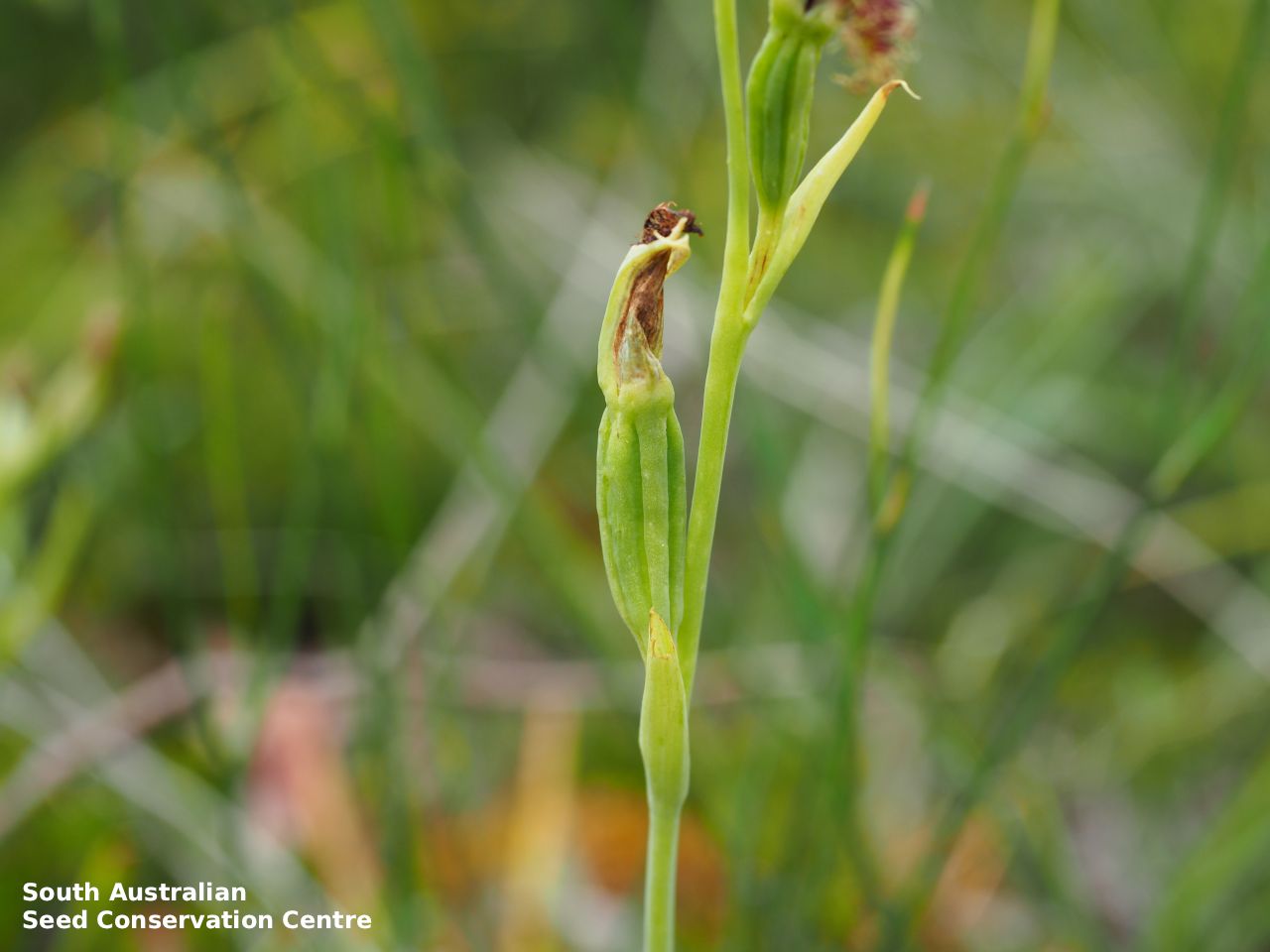
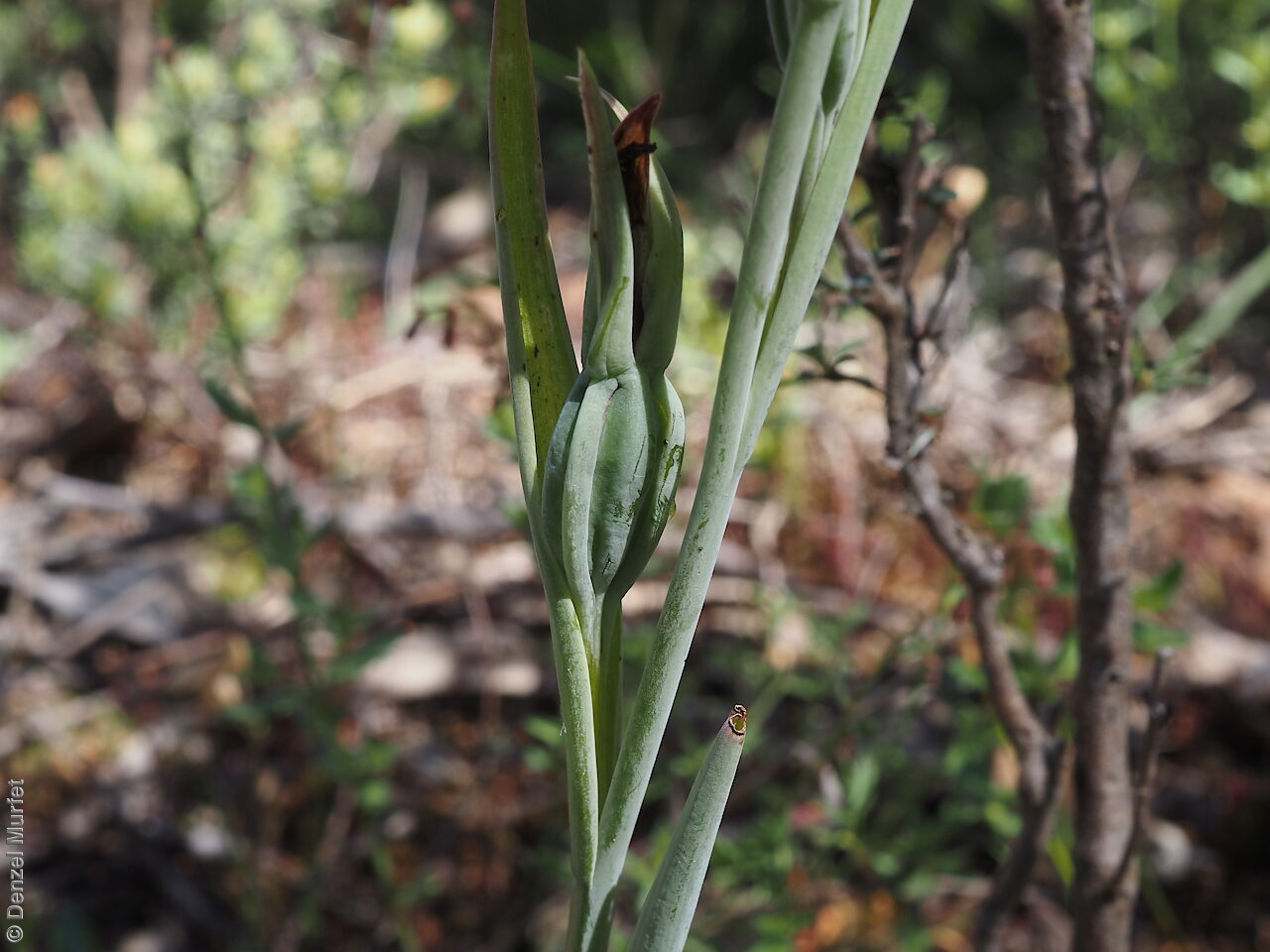



Common names
Woodland Bearded orchid
Purplish Beard-orchid
Brown-beard
Etymology
Calochilus from the Greek 'callos' meaning beauty and 'cheilos' meaning lip, referring to the ornamented labellum of most species. platychilus from the Greek 'platus' meaning flat and 'cheilos' meaning a lip.
Distribution and status
Found in the Mount Lofty Ranges and the lower South-east in South Australia, growing in dryish open woodlands and heaths. Although found in New South Wales, Victoria and Tasmania, based on molecular studies, it is not treated as a distinct species in these states, rather as a synonym of C. robertsonii. Native. Very rare in South Australia. Common in the other States.
Herbarium regions: Northern Lofty, Murray, Southern Lofty, South Eastern
NRM regions: Adelaide and Mount Lofty Ranges, South Australian Murray-Darling Basin, South East
AVH map: SA distribution map (external link)
Plant description
Terrestrial, slender to quite stout orchid growing to 45 cm tall. Leaf linear-lanceolate, to 30 cm long, shorter or longer than raceme, somewhat fleshy, channelled. Flowers 2-9 on a slender and rigid stems, green and purple. Dorsal sepal, broadly ovate, to 15 mm long, concave, acute. Lateral sepals ovate, as long as dorsal sepal but narrower, spreading at sides of labellum. Petals spreading, ovate, asymmetric, about half as long as sepals, yellowish-green with dark vertical stripe. Labellum curved forward, base fleshy, lamina broadly triangular, to 20 mm long, golden-yellow or green, extreme base covered with crowded purple glandular papillae, tip extending into short glabrous ribbon, in between densely bearded with long purple glistening glandular hairs. Column short, widely winged, with 2 purple eye-like glands at base, connected by a raised purple, often dotted ridge. Flowering between October and November. Fruits are brown papery ellipsoid capsule. Seeds are very small seed with a long cylindrical translucent brown mesh-like covering.
Seed collection and propagation
Collect seeds between November and December. Collect fat capsules as they start to dry and turn brown. Pods will split and release the seeds quickly and will require monitoring. To increase the chances of collecting mature pods, it is recommended that a small breathable bag (ie. Organza bags) be used to enclose the developing capsules. Place the capsules in a container that will hold fine seeds and leave to dry for a few weeks or until the capsule split. Then carefully hold the capsule and tap it gently to release the seeds. Store the seeds with a desiccant such as dried silica beads or dry rice, in an air tight container in a cool and dry place, refrigerator or in liquid nitrogen. Seed germination in Calochilus species is difficult without compatible mycorrhizal fungi. More research is needed in order to understand the germination requirements in the genus Calochilus.